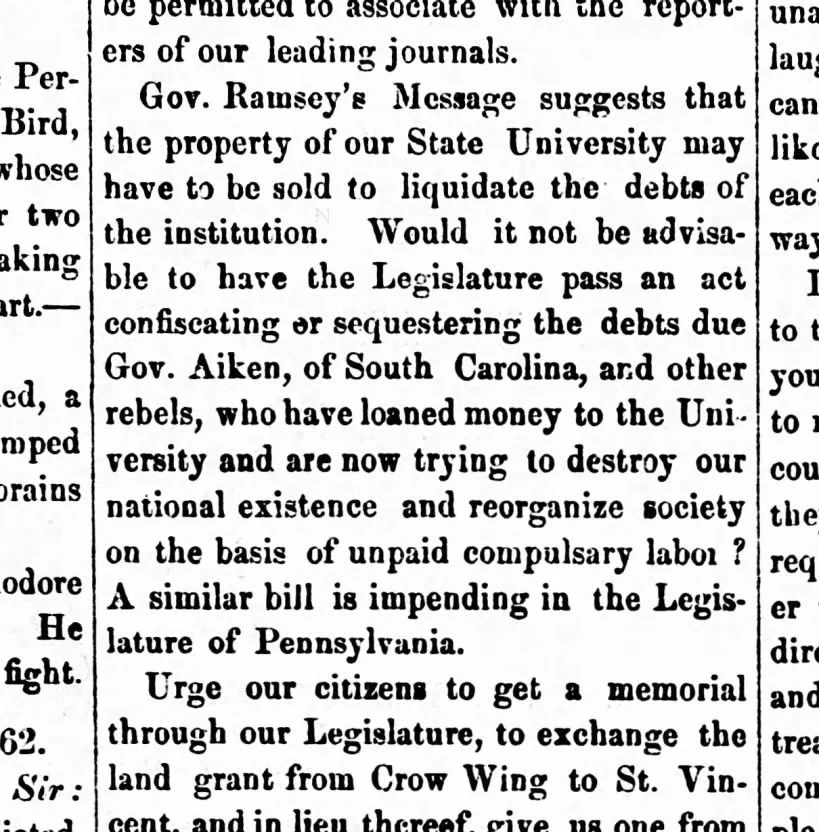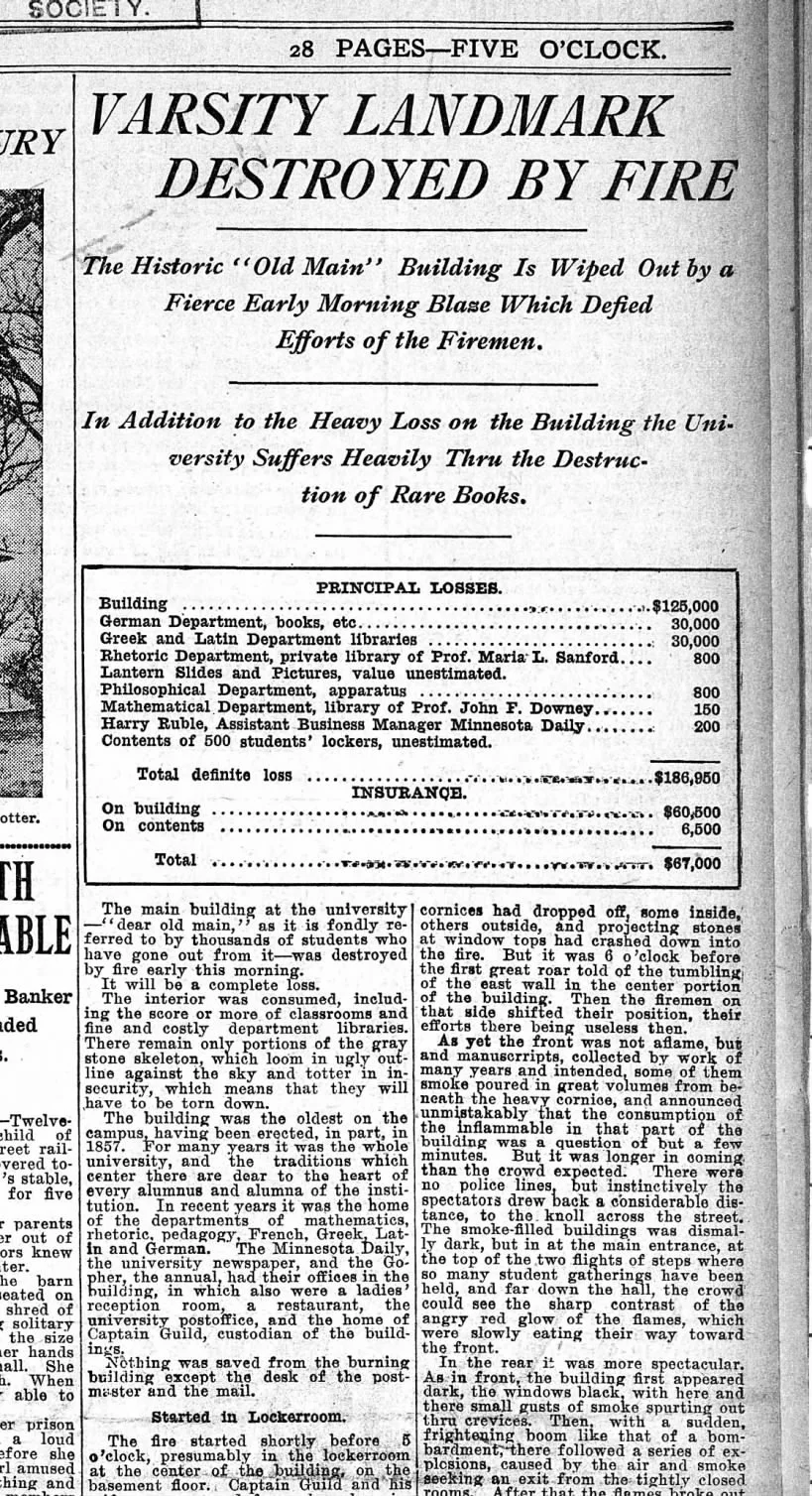Is the U of MN funded by a Land Grant or Land Grab?
The University of Minnesota was established in 1851, chartered with 49,000 acres of land given to it by the Territory of Minnesota. This wasn’t the 27 acres that the campus is actually built on, but land that was given to the school and that they could develop or sell as needed to raise money to fund the school.
That land wasn’t free. But it came pretty close.
For more about the early (complicated and controversial) years of the University of Minnesota, read my previous post “When the University of Minnesota Crashed and Burned” HERE.
But what else happened in 1851? The Treaty with the Dakota that ceded millions of acres of land to the United States government. The Dakota did so in response to the withholding of rations, the threat of violence, enforced starvation, the killing of game and the destruction of agriculture. They needed money to buy food and the only way they could get it was by selling land.
While the University moved ahead, building a schoolhouse and eventually Old Main the United States Congress delayed the payments that were owed the Dakota, even changing the agreements without the tribes’ knowledge.
After the government repeatedly failed to hold up their end of the deal and the Dakota were starving, the Dakota fought back. The Dakota War of 1862 ended just weeks before Governor Ramsey accepted thousands MORE acres of land for the University under the Morrill Act. Land that the government took from the Dakota as they were expelled from the state.
Although the Dakota land was appraised at the time at $5-$10 dollars per acre, the Dakota were paid less than 2 and half CENTS per acre.
Nearly 830,000 acres of Dakota and Ojibwe land became land endowments for 35 Universities across the country. Those schools continue to benefit from funds raised by those lands today.
There are lots of ways land endowments make money: selling timber, mining minerals, leasing land for recreation, lleasing land for business development, leasing land for residential development, leasing land for communication towers (radio, satellite or cell phone).
The most recent appraisal of the U of M’s endowment is $2.5 billion. Which leaves a lot of people feeling like it was less of a land grant and more of a land grab.
So what does all of this mean?
There’s no simple way to “fix” this. Giving the land back or making financial reparations would mean untangling over 172 years of financial transactions.
What we can do is at least acknowledge that students who graduate from land-grant universities (I did, I graduated from Iowa State University) have benefited. Even if you worked your way through school, your tuition was lower than it would have been without the land endowment. We benefited from a system subsidized by the profits made from land taken violently and illegally from native americans.
The University of Minnesota and the TRUTH Project are working collectively to right the wrongs of the past. They have established tuition-free college for registered members of Minnesota’s 11 tribes. They have returned 3400 acres of the Cloquet Forestry Center to tribal control. They are returning archeological remains and artifacts of tribes that were excavated and displayed by the University. Most importantly, they are on a fact-finding mission to reveal the actual value and cost of the land that was taken.
It’s a start.










